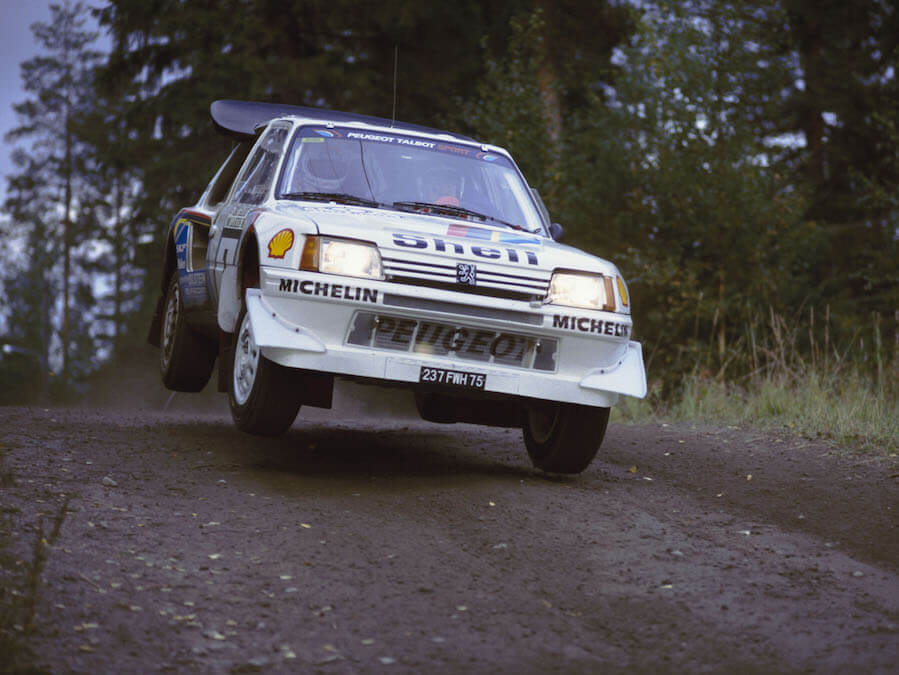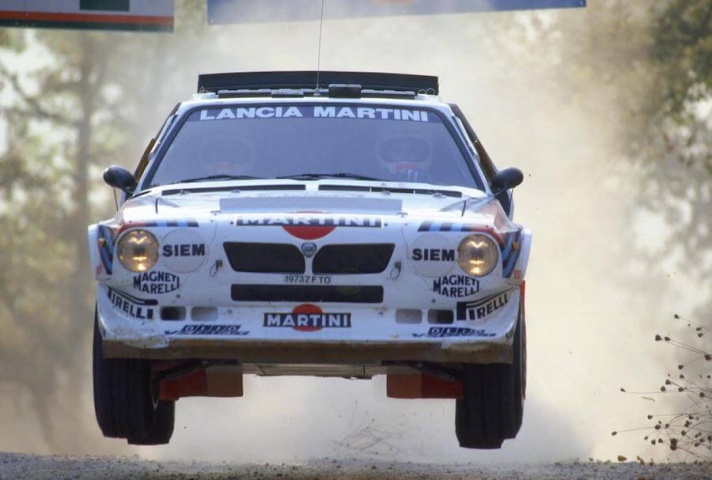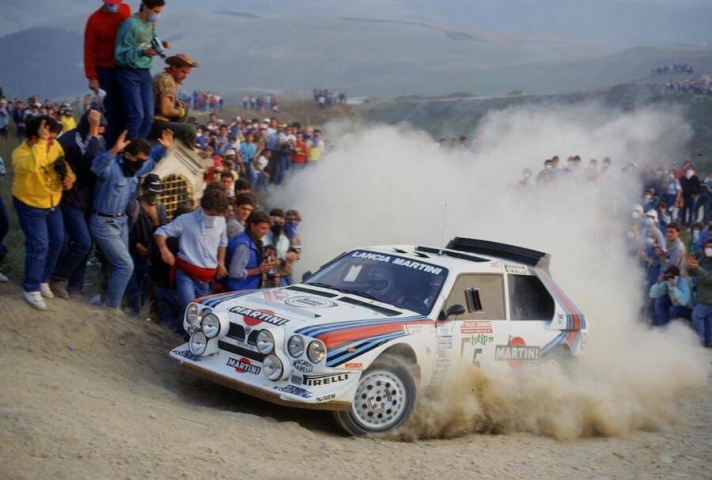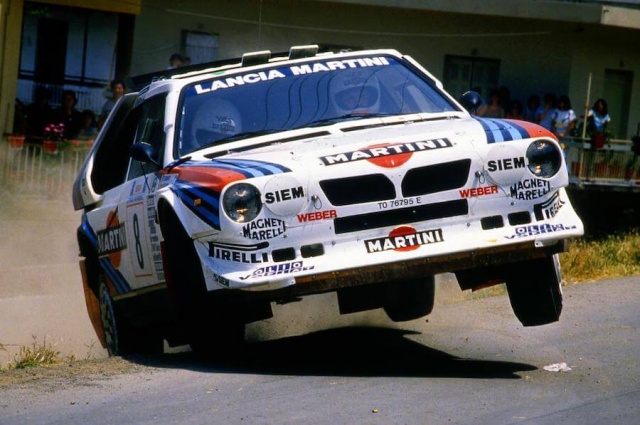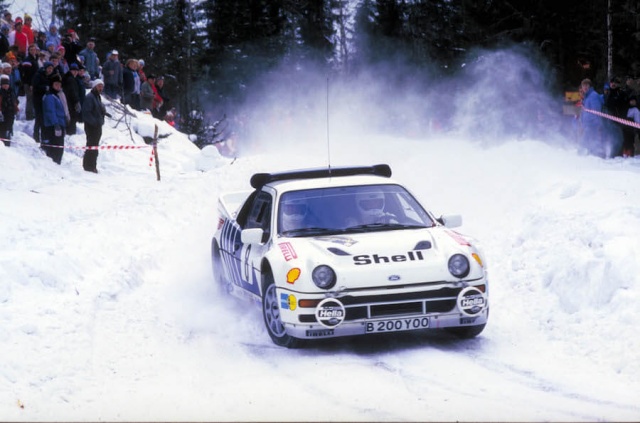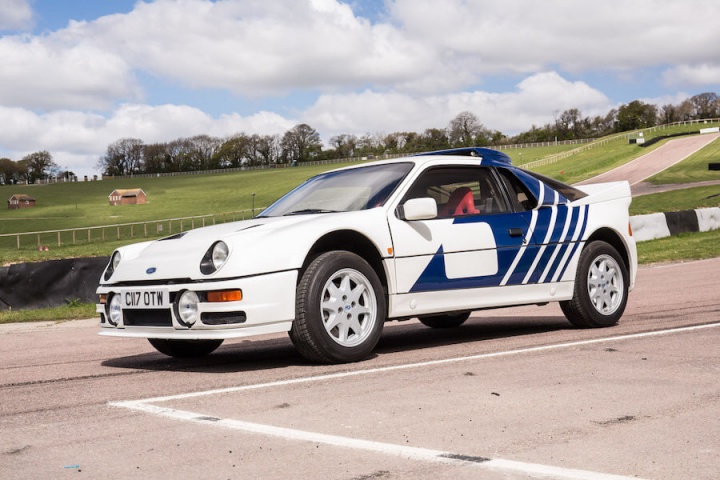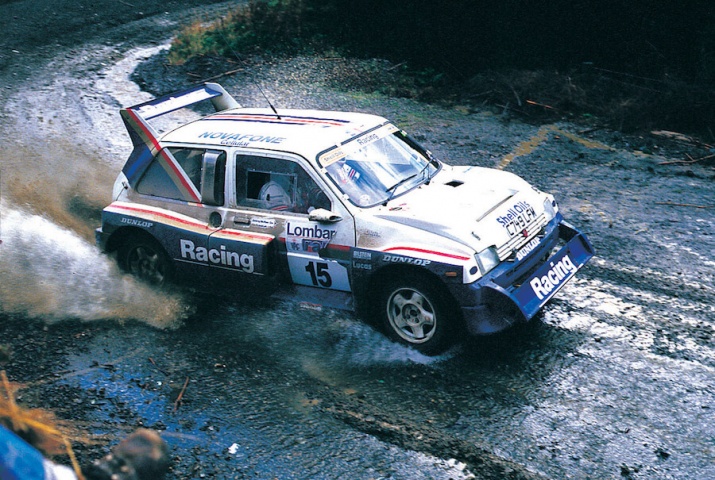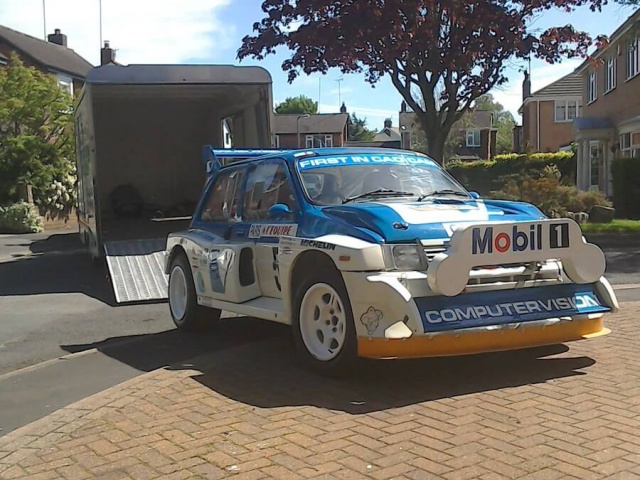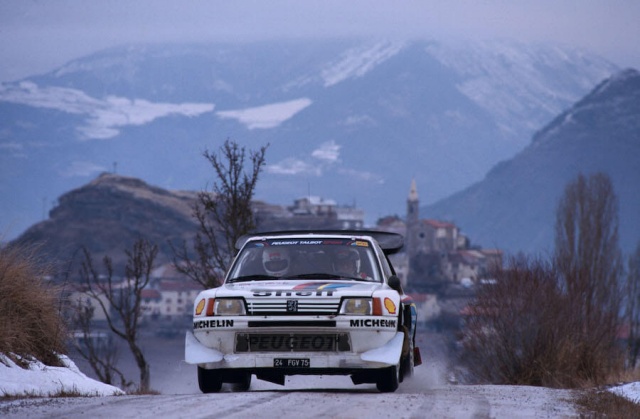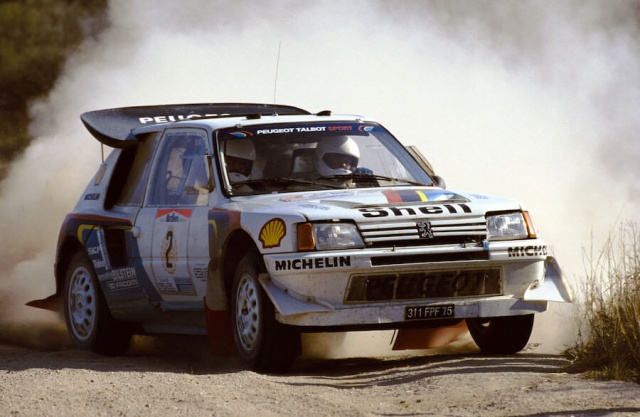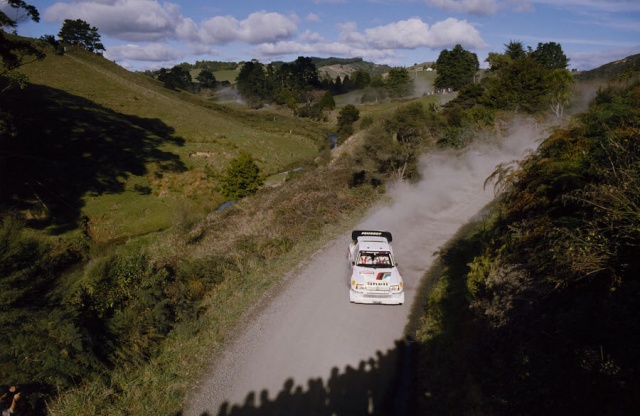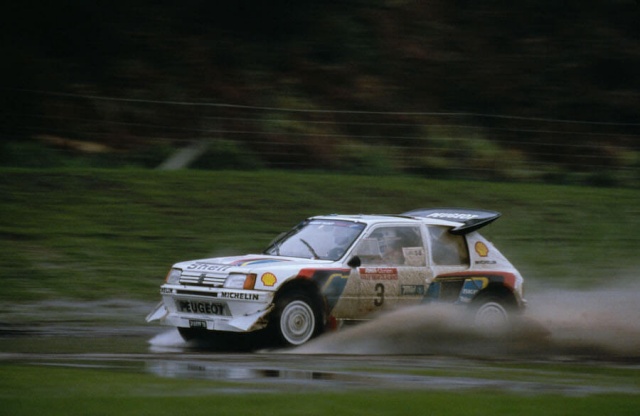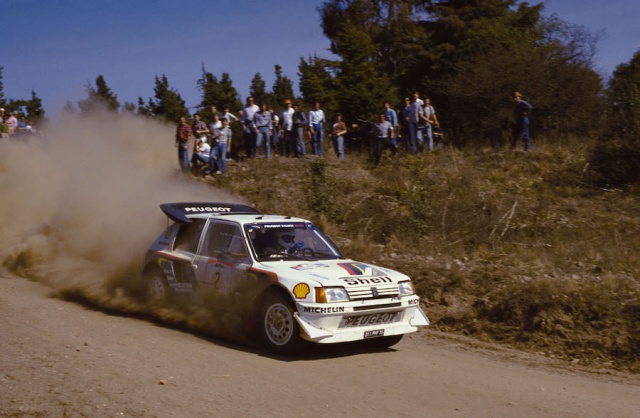With six manufacturers fielding all-wheel drive supercars on the stages, 1986 promised to be the most spectacular year yet. The reality was more tragic and eventful than anyone could have dared to imagine.
Toivonen trounced all comers to dominate the traditional season-opener in Monte Carlo, despite a collision with a road car between stages which twisted his Lancia’s chassis by quite a considerable amount. In the words of Henri himself: ‘’Right corner sideways, left corner understeer. It’s a banana car…’’. Not much else of note happened apart from the debut of the ungainly and slow Citroen BX 4TC, a machine which made many observers wonder if Citroen’s engineers had failed to watch any event since 1982, as the car’s layout and technology bore an uncanny resemblance to the original Audi Quattro. It had about as much drivability and pace too, and the ugly brute would not play any meaningful part in the season’s dramas.
Ford’s sleek RS200 debuted in Sweden in the hands of Stig Blomqvist and Kalle Grundel, after meeting homologation requirements by a whisker. Some of the cars presented for FISA inspection back in Boreham didn’t even feature proper suspension, instead being propped up by an assortment of iron bars. The whole process was so rushed that senior management were pressed into service to collect the still-hot bars from the local ironworks, only to arrive at Boreham with the boots of their Sierras and Granadas smouldering away nicely… The car would prove to be quick but burdened by bad luck throughout the year, and its potential would be sadly unrealised. The Swedish event proved to be one of unusual attrition with engine issues claiming Toivonen and Salonen, while Juha Kankunnen took the second Peugeot to victory on his first time competing on the snow event. Austin Rover’s naturally-aspirated MG Metro 6R4 developed an unhealthy appetite for cambelts and transmissions, and continued to lose ground as the turbo cars’ development ploughed relentlessly on throughout the year.
Next up, Portugal. The excitement was palpable, with all the major teams meeting on equal ground for the first time of the season, and the spectators flocked in their hundreds of thousands. Images of the first stage around Sintra show a human tunnel, with spectators jumping out of the path of the speeding cars at the last millisecond. It couldn’t last, and it didn’t. Timo Salonen’s 205 rolled up to the stop line shorn of its rear bodywork, having hit a cameraman. He survived, but a few minutes later others wouldn’t be so lucky. Local hero Joaquim Santos’ privately-run Ford RS200 crested a brow to find spectators blocking the road, and the ensuing attempt at avoidance sent the car ploughing into a group of people on the outside of the following corner. Three died immediately, with a fourth succumbing in hospital later. The dead included a mother and her 11-year-old son.
The drivers convened at the rally headquarters and produced a handwritten statement announcing their withdrawal from the event. They emphasised that the crash occurred purely due to the actions of spectators, and not due to the type of car or the speed involved. Looking back at videos of the event now is harrowing, and spectator problems would plague the Latin-based events far beyond the end of Group B.
This isn’t to say that the cars weren’t dangerous, far from it in fact. No-one was pushing harder than Henri, and a couple of rallies later in Corsica his pace in the fearsome Delta S4 was raising concerns from fellow competitors. The Finn was suffering from a cold, but was holding a commanding lead over Bruno Saby’s Peugeot. Henri himself commented that he wasn’t at ‘’full attack’’, but period footage suggests quite the opposite. It all became elementary on the 18th stage, when the Lancia failed to negotiate a medium-speed left-hander and plunged off the road. Running without underbody fuel-tank protection to save weight, the Delta ignited immediately and burned Toivonen and co-driver Sergio Cresto to death before any help could intervene. There were no tyre marks on the tarmac.
Nobody is fully sure what happened that day, but the death of the sport’s brightest star would convulse FISA into action. The infamous Jean-Marie Balestre (a man accustomed to controversy throughout his tenure) announced that Group B would be banned outright at the end of the year. Audi Sport withdrew from the season there and then, a move which led Walter Rohrl to also call time on his full-time rallying career. Walter loved the challenge of Group B but could see that the risks were becoming too great, stating: ’’After that race, the rest of the works teams continued in 1986. If it’s too dangerous we stop now, not in six months’’. Despite its propensity for making engineers violently ill during test spins, the Quattro was one of the safest cars, but enough was enough for the Ingolstadt team. It was a sad end for the outfit that had instigated the all-wheel drive revolution at the decade’s beginning.
The show went on, and nobody seemed to be slowing down despite the horrific events of the previous rallies. Markku Alen survived a big scare in Finland after losing his Lancia’s rear wing, and the championship was turning into a two-horse race between him and Kankkunen. Tensions boiled over at October’s Sanremo Rally when the entire Peugeot works team was disqualified by the event scrutineers over allegations that the underbody of the car was creating ‘’ground-effect’’ downforce. Jean Todt could barely be restrained, as the 205 T16 had ran in this configuration for most of the season. Lancia scored a podium lockout with Alen now a real contender for the world title, but the Sanremo affair wouldn’t be done and dusted just yet…
The USA’s Olympus Rally would close out the season, and Alen and Kankkunen went into the final round under the impression that whoever came out on top would be champion despite Peugeot’s ongoing appeal against the Sanremo results. The stakes were huge, and Lancia reputedly equipped the Delta S4 with almost 700hp for its swansong event. Both drivers were on an absolute mission, and each suffered their fair share of problems. Markku won the event after Juha endured a puncture and electrical issues, and therefore the driver’s title would go to the lanky Finn-turned-Italian. Or would it? The answer came a week later, as Alen tested the new-for-1987 Group A Delta. ‘’This is the middle of winter. Why is a private plane coming to north of Finland? I knew this was Lancia PR people. I say to (co-driver) Kivimaki straight away: ‘We have lost’. ‘’ And so it was, as FISA annulled the Sanremo results, handing the title to Kankkunen.
Group B therefore exited stage left with a bang. It still fascinates and mystifies people today, and it’s no coincidence that next year’s revised World Rally Car regulations are intended to convey some of the old magic. It will be interesting to judge the pace and spectacle that the new breed promises to bring, but it’s hard to imagine that it will change the rallying world in quite the same way that the Group B monsters did.
Keep an eye on the site for the final instalment in this series, in which we examine Group B’s legacy and what could have been.

